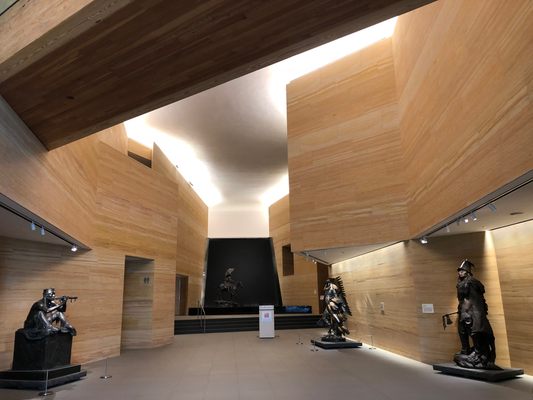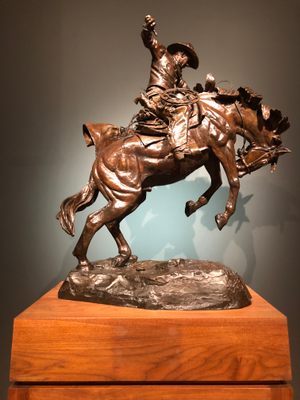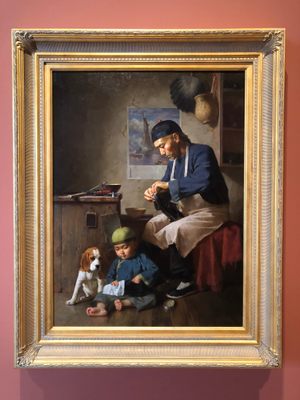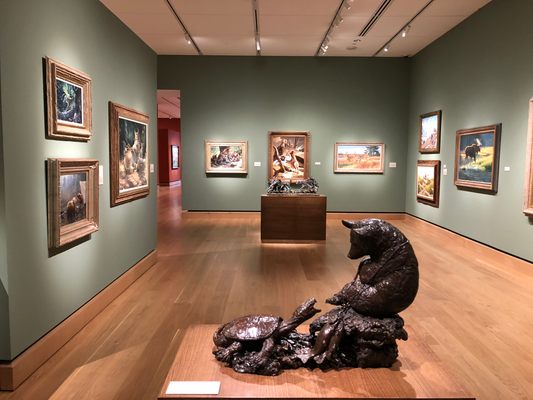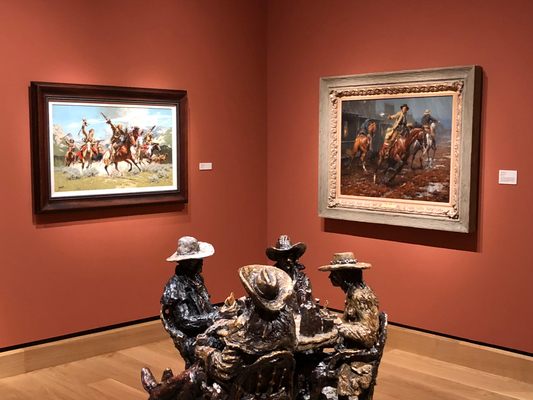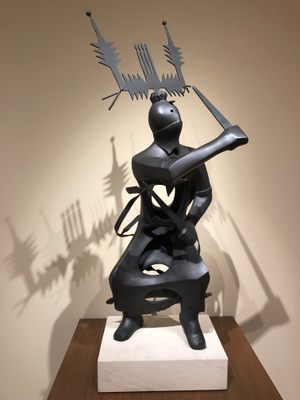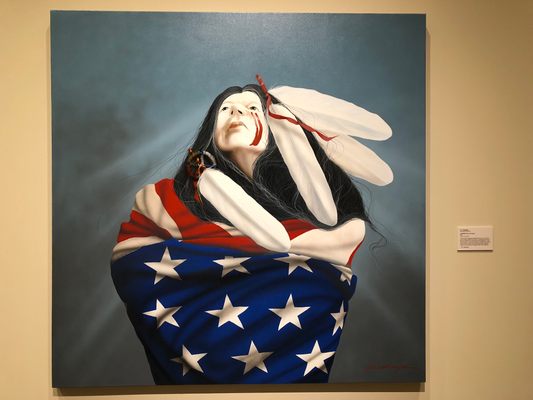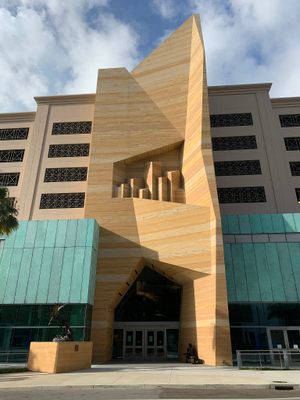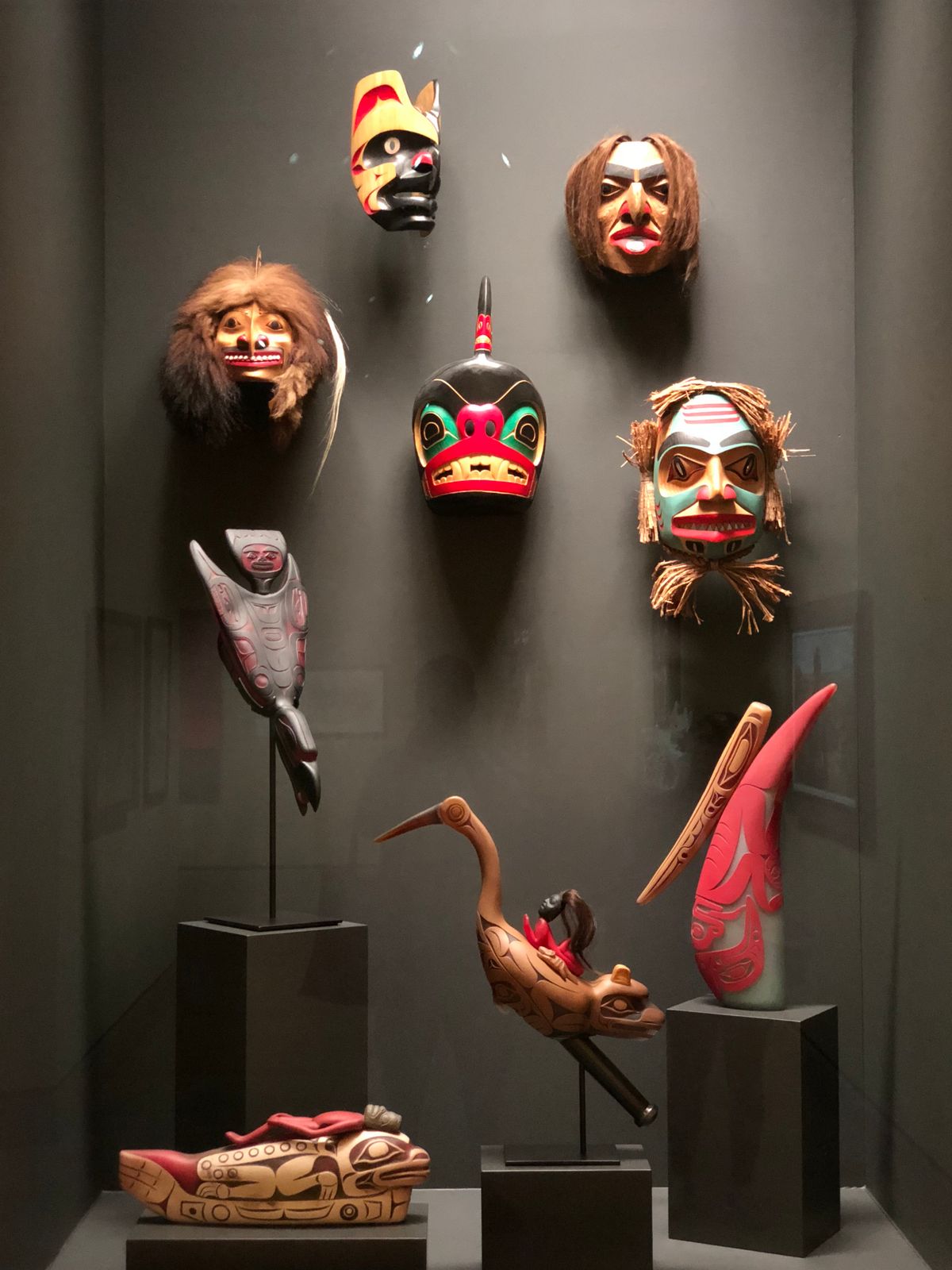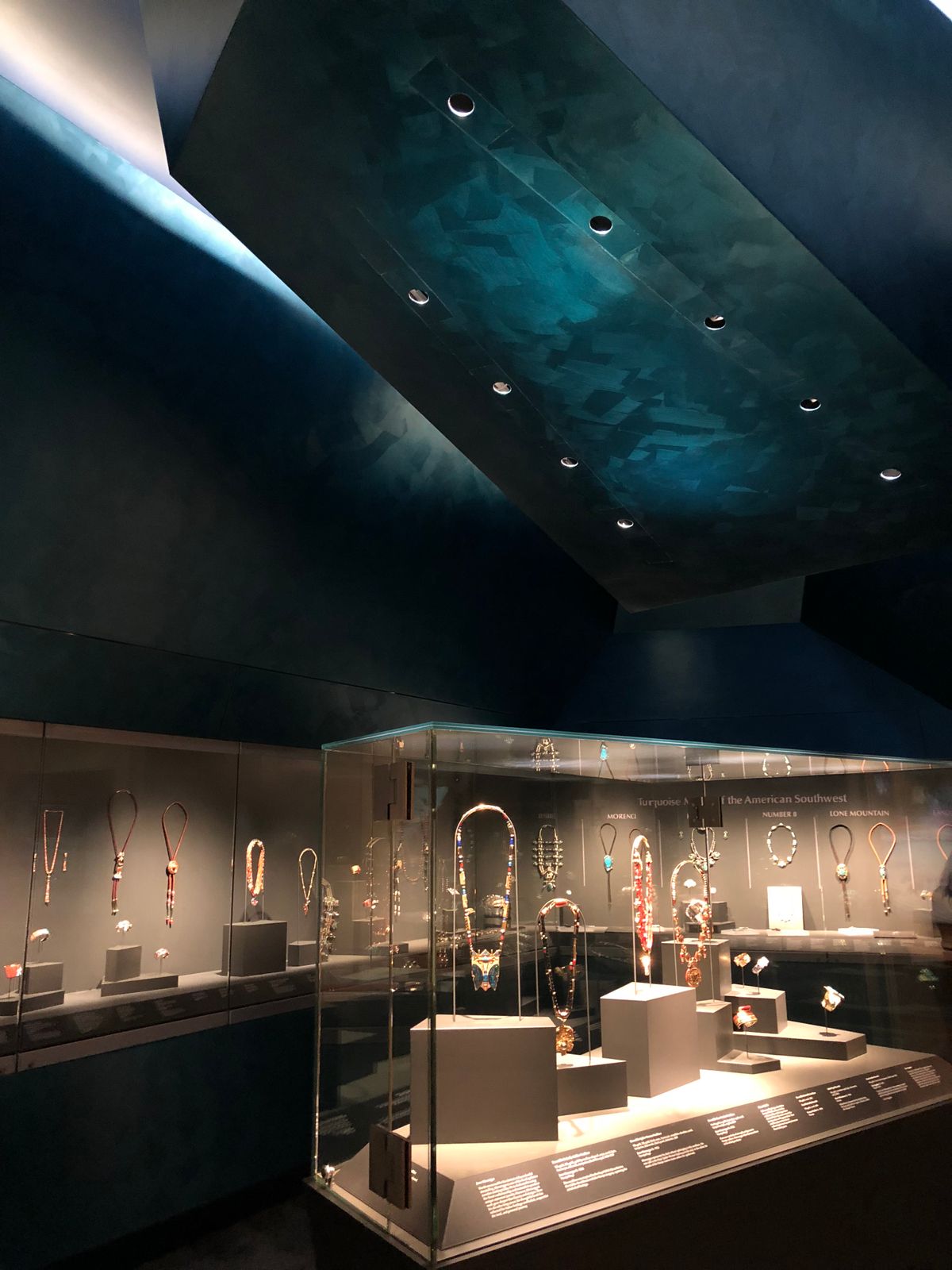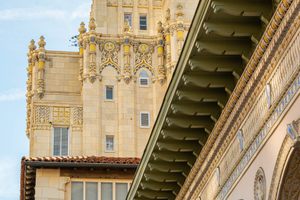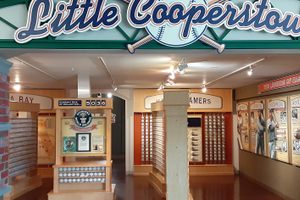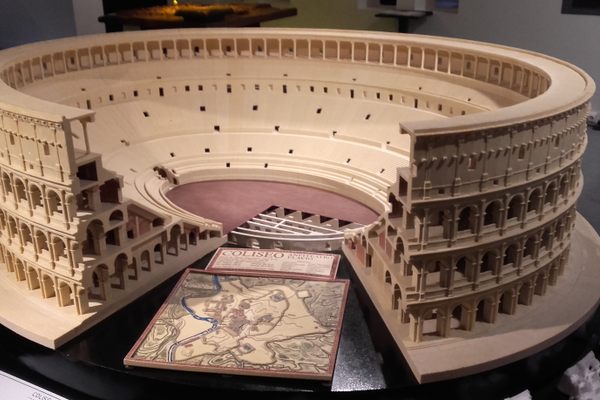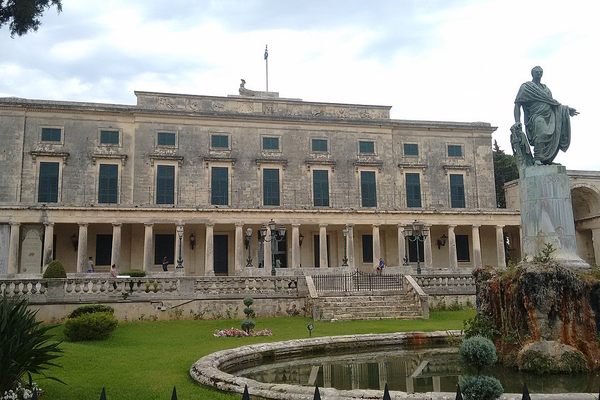About
In April of 2018, the James Museum became the latest addition to downtown St. Petersburg’s cultural scene, featuring roughly 400 works from the private collection of Mary and Tom James. In planning the museum, however, the couple realized that beaches and palm trees don’t exactly evoke a sense of the western frontier and Great Plains. Their solution? Turn the first floor of the building itself into a canyon complete with sandstone walls, sharp winding angles, and a waterfall along the far that wall that looks like it may have been responsible for carving out the pathway.
The architectural theme continues throughout the second floor, using colors traditionally associated with western artwork to designate the various galleries, which are grouped thematically. The introductory gallery (sand) includes an orientation theater along with several paintings of landscapes and sculptures of historical figures. The adjacent Early West gallery (rust), which features works by Russell and Remington, flows into the Native Life gallery (blue-gray), which focuses on the daily and cultural life of American Indians in the 1800s through a variety of styles and mediums (with the exception of photography).
The Native Life gallery opens up into the Native Artists gallery (deep gold) which provides a contrast from the more traditional indigenous works you’ve likely seen before (beadwork, masks, ceremonial artworks) with more contemporary works including paintings by Earl Biss, who specializes in spotted ponies. Within the Native Artists gallery is also a smaller room called the Jewel Box. The room’s deep teal, sharp angles, and unusual lighting are intended to resemble the interior of a geode, ideal for displaying Mary James’ Native American jewelry collection.
From the Native Artists gallery, visitors can enter the Frontier (burnt sienna), which gives a bit of a visual history of the work involved in making the colonial concept of manifest destiny happen. It also provides a window into less frequently explored themes with works by Chinese artists many of whose families were involved in building the railroads and who were, subsequently, denied citizenship—a topic that bears more than a passing relevance to issues the country faces today.
Through the Wildlife Gallery (moss green) with a number of photo-realistic paintings and sculptures, you’ll arrive at the New West Gallery (sand). Along with a Warhol, visitors can see a number of modern, cubist, and pop artworks here, several of which unflinchingly explore the relationship between indigenous people and the United States government. This gallery, like the Native Artists gallery, notably aligns with the overall mission of the museum to provide a sustainable income for living artists.
At the end of the New West hallway is the Special Exhibits gallery (light gray and stop sign red), which as of January 2019, features the pop artwork of local artist James Michaels.
Related Tags
Know Before You Go
Visitors who have worked up a thirst and/or appetite exploring the galleries can enjoy a bite on the first floor in The Canyon Café and sit up at the bar (which is itself an artwork, carved from mahogany in 1905 for use in San Francisco and subsequently Chicago before finding its way into the James’ collection) where a southwestern-inspired menu is available daily from 10 a.m. to 5 p.m.
Published
January 10, 2019

